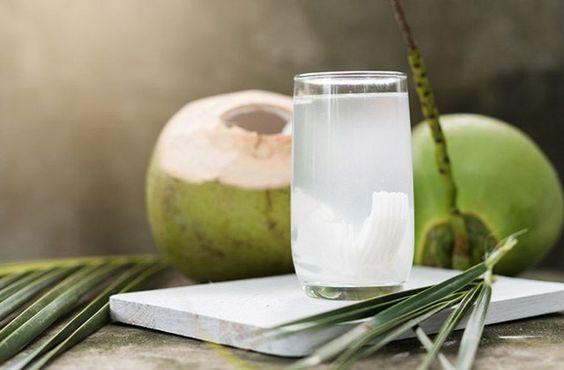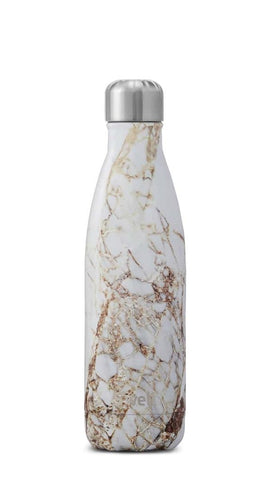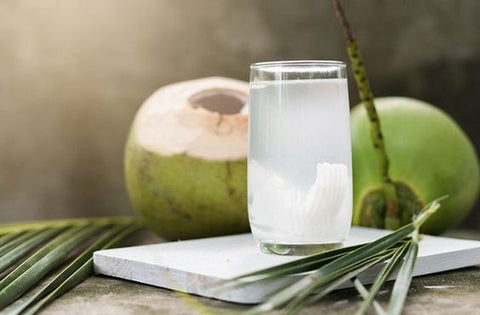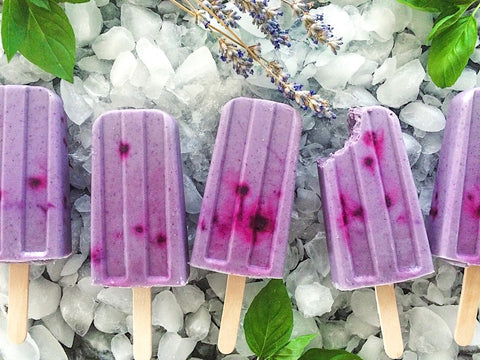
Dear Ruthy,
Now that summer has hit with full force, I find that I’m always feeling dehydrated, no matter how much water I (try to remember to) drink. I wake up every morning feeling so thirsty and my mouth is regularly dry. Is there something more effective than water to keep hydrated? And do you have any tips for making regular hydration easier?

(Photo from A Couple Cooks)
I’m so glad that you asked this question as dehydration is all too common in the summer months, and more dangerous than many realize. I’ve got some great tricks that I’ve found to be very effective, as I too have always found it difficult to drink regularly enough. But before diving into my favourite hydration hacks, let’s clarify a few important facts about hydration, which will also help explain why some of the tips I’ll share work so well.
The average adult human body is made up of about 60% water. It’s easy to conceptualize that our blood is about 50% water, but many of our organs (including the heart and other muscles, brain, lungs and kidneys) are composed of over 70% water, and even bones are about 30% water!
A key component of dehydration is electrolyte loss. When we lose water, particularly through excessive sweating during exercise or in hot weather, our bodies also lose mineral salts, including sodium, potassium, calcium and magnesium, which play a crucial role in moving water throughout the body (aka, to all of our water-rich organs).
What this means: If you are losing more water than you’re taking in, the body cannot function properly.
In fact, dehydration also affects:
- hormone & neurotransmitter production by the brain
- the functioning of every cell in the body
- metabolizing the food we eat
- flushing waste through the body
- joint lubrication
- transmission of oxygen throughout the body
And much more….
Once you’re actually dehydrated, you could experience a number of symptoms, such as nausea, dizziness, cramps, elevated body temperature and more. In severe cases, measures such as hospital-administered hydrating intravenous (IV) treatment could be required.
All things we want to avoid. So I’ll share with you my 4 favorite & fun tips for staying hydrated right through the dog days of summer!
1. Drink water throughout the day
It’s often recommended to drink 8-10 glasses (2 litres) of water a day. While on average that’s a good number to target, the amount each person needs changes daily, and is affected by a number of factors, including activity level, heat exposure, foods consumed (high water or high sodium), alcohol consumption, and more. (A good rule of thumb is that your urine should be pale yellow — not too dark or too light.)
But this can be challenging. Do you also find it hard to remember to drink enough throughout the day?
Pro Tip: Keep an insulated water bottle with you everywhere you go.

(Photo from Swell)
Anything will do, as long as it’s BPA-free. And to up the joy factor, pick a fun colour or pattern that matches your style! Right now I’m loving my 32 oz wide-mouth Hydro Flask bottle. It’s got a double wall that keeps drinks cold (or hot) for hours, and the mouth is wide enough to easily add ice or sliced fruit. You can also get it with a flip-cap for easy drinking!
2. Alternatives to water
I know, sometimes plain water just doesn’t do the trick. That’s often the case for me. Here are my favorite hydration alternatives that I use to jazz up my drinking game:
- Coconut water — it’s also a great source of nutrients including salts and other minerals, Vitamin C, protein and fibre
- Iced tea — brew up a large batch of herbal tea and keep it in the fridge for up to 3 days
- Flavoured water — try slices of lemon, lime or cucumber, or chunks of fruit such as pineapple, melon or strawberries

(Photo from Parenting Healthy Babies)
3. Eat high water content foods
If you’re like me, regularly consuming the recommended 8-10 cups of water a day is sometimes challenging. But eating foods that are naturally hydrating can help make up some of this deficit. Some of the top fruits and vegetables high in both water and mineral salts are:
- Lettuces
- Cucumber
- Celery
- Radishes
- Zucchini
- Bell peppers
- Tomatoes
- watermelon
- Strawberries
- Pineapple
- Melons
- Peaches
- Citrus
Pro Tip: Two of my favourite ways to pack in hydrating foods are to whip up a green smoothie and to keep homemade fruit-based popsicles in the freezer.
Smoothies are particularly great on super-hot days when I crave something refreshing over a cooked meal for breakfast or a light lunch. Here’s my go-to recipe that’s got the perfect balance of earthy, sweet and zing! Just add everything to a high-powered blender and blend until smooth.
- Handful of spinach
- 1-2 tbsp herbs, such as mint, parsley or cilantro
- 20 g celery
- 40 g cucumber
- 25 g pineapple
- ½ tsp (or more to taste) fresh ginger
- Small pinch Himalayan salt
- ¼ cup coconut water (or filtered water)
- Juice from ½ lemon
- Optional: scoop of protein powder of choice or 1 tbsp hemp seeds
- Ice, as needed
Fruit-based popsicles are the perfect refreshing snack or guilt-free dessert to kids and big kids alike! I’ll either just blend up a mix of berries or tropical fruits such as mango and pineapple and freeze as-is, or add some hydrating coconut milk for a creamier, dairy-free treat.

4. Extra hydration when exercising
All that extra sweating during exercise means that we lose a lot of water and electrolytes. The key is to begin replenishing pre-workout, as water and salts need to be in balance for optimal muscle functioning and oxygen utilization. Drink at least 1 cup in the hour before working out, small sips throughout the workout, and 1 or more cups post-workout.
Water is typically sufficient for shorter or lighter workouts, but for more intense, sweaty workouts and endurance activities such as long distance running and cycling where electrolyte loss is higher, it’s a good idea to drink something with electrolytes.
There are many electrolyte products and sports drinks on the market, but many contain added sugars and artificial flavours.
Pro tip: Go for natural electrolyte beverages such as coconut water, or make your own!
For a simple yet super-hydrating and salt-replenishing workout drink, just mix together:
- 2 cups filtered water
- ¼ cup lemon or lime juice
- Small pinch Himalayan or sea salt (no more than ⅛ tsp is necessary)
- Optional: a touch of raw honey or other sweetener, to taste
- Optional: a bit of beet, cranberry, blueberry or other similar powder for some natural colour
Drink lots, have fun and enjoy the summer!


Ruth Elnekave is a Toronto-based chef, holistic nutritionist, culinary instructor, recovering corporate lawyer and founder of JOYÀ. Her projects are fuelled by one main goal: to spread the pure joy and wellbeing experienced when sharing and savouring delicious, real food.
